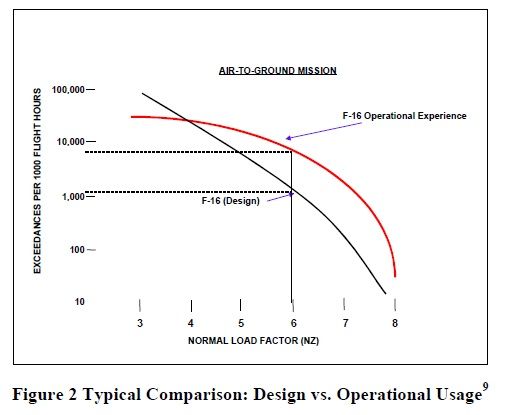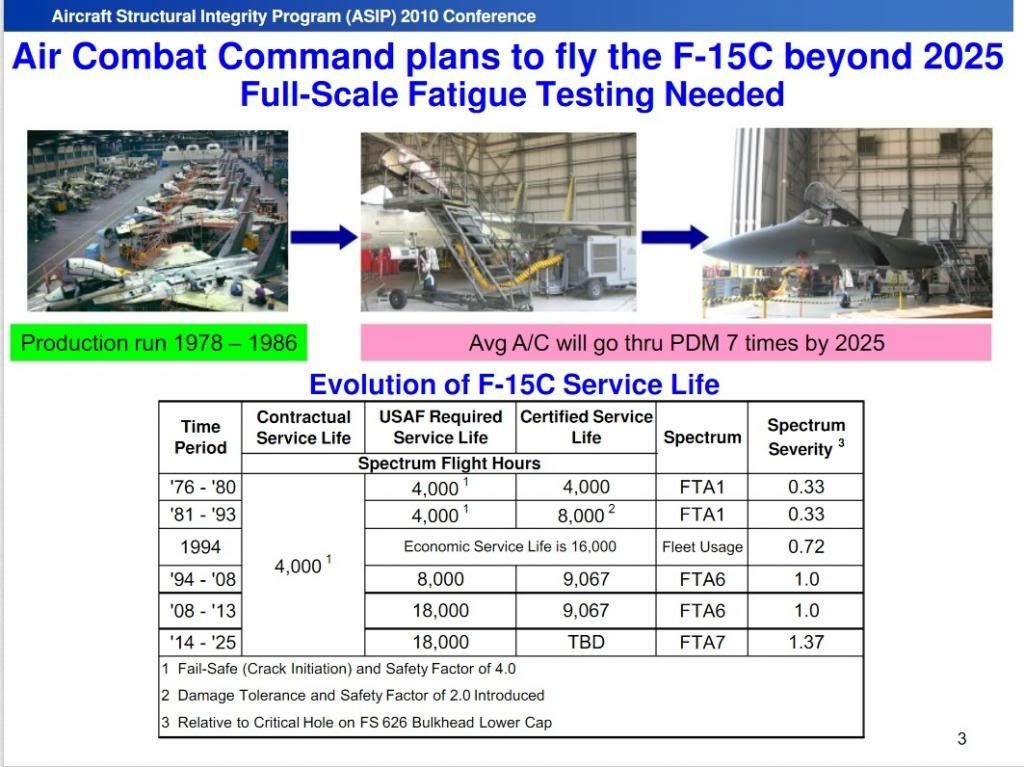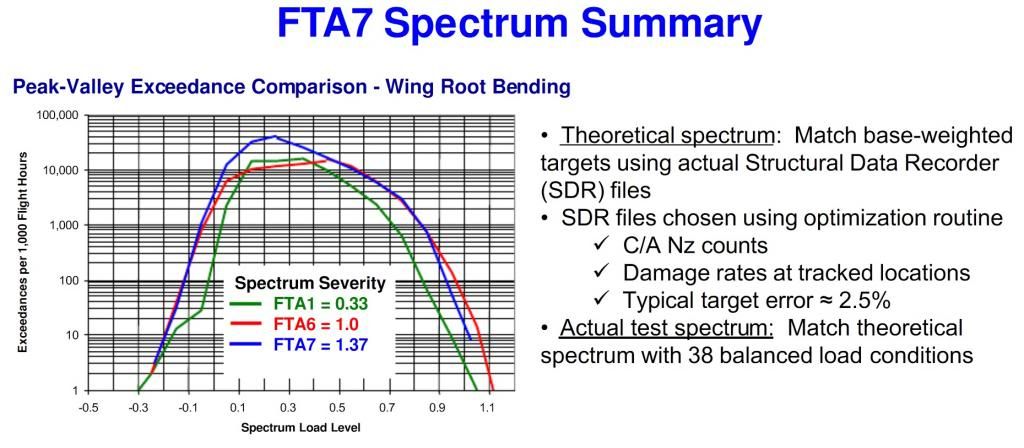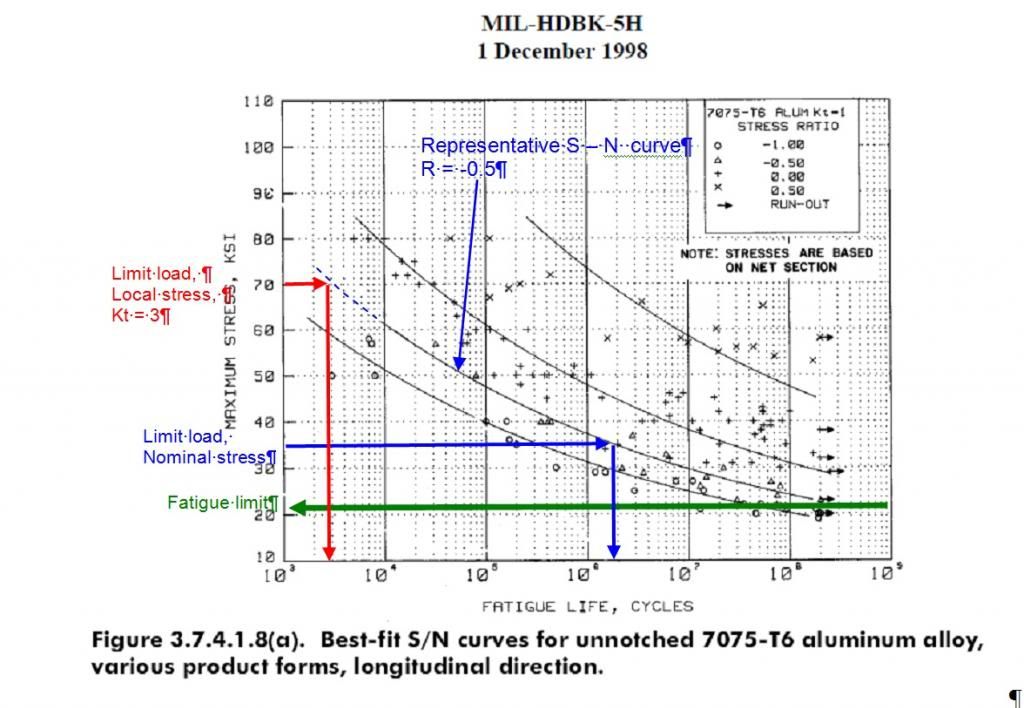Repetition of limit G-factor
Join Date: Oct 2006
Location: The Great Midwest
Posts: 245
Likes: 0
Received 0 Likes
on
0 Posts
Unsymmetrical maneuvers (rolling maneuvers) on fighter aircraft is the one area where pilots are not a careful/aware as they might be. Since there is no “unsymmetrical g-meter” and the limits are normally listed as “over 1/2 lateral stick”. In a maneuvering air-to-air engagement most pilots do not monitor their lateral stick displacement well enough to know if the unsymmetrical limit was exceeded. Fortunately the most modern fighters have flight control computers which will keep the pilot out of trouble.
Scene: WWI RFC maintenance tent:
Lord Flashheart enters holding bent control column.
"Right you lot, get me a new kite pronto or I'll give your wives something to hang their towels on. Woof!"
Lord Flashheart enters holding bent control column.
"Right you lot, get me a new kite pronto or I'll give your wives something to hang their towels on. Woof!"
Thread Starter
Join Date: Mar 2013
Location: Midpoint between equator and North Pole
Posts: 28
Likes: 0
Received 0 Likes
on
0 Posts
The following is a quote taken from an aviation text
What reference are you able to provide ASIP that operating at the limit load is a no no.
We all recognise that pulling "g" impacts fatigue life,
so please correct our, or I should say, mine, distorted thinking.
Disasters are avoided not because it is intristically safe, but rather because there is a numerous army of specialists tracking the problem continuously.
As some reference I can give a link to a paper about F-16 service life problems:
http://www.dtic.mil/cgi-bin/GetTRDoc?AD=ADA407261
Pictures follow.
Last edited by ASIP; 19th Mar 2013 at 23:57.
Thread Starter
Join Date: Mar 2013
Location: Midpoint between equator and North Pole
Posts: 28
Likes: 0
Received 0 Likes
on
0 Posts
This was original plans for F-16 service life.

This is comparison of the design and actual usage. Somebody pulled high g's too often.

And this is the result.

If the fleet would have been kept flying without premature part replacement up to the design 8000 FH, some aircraft could have disintegrated.

This is comparison of the design and actual usage. Somebody pulled high g's too often.

And this is the result.

If the fleet would have been kept flying without premature part replacement up to the design 8000 FH, some aircraft could have disintegrated.
Join Date: May 2005
Location: Mars
Posts: 527
Likes: 0
Received 0 Likes
on
0 Posts
Bevo,
The F-15E had an "overload warning system" that varied the amount of g you could pull depending on the speed the aircraft was flying to avoid serious damage whilst rolling in the transonic regime. Most "over-Gs" where called at very low g-load, 3-4g whilst transonic and rolling, pretty annoying.
ASIP,
Despite aiming at 9g in an F15, most pulls by competent pilots would be in the mid to high 8s, we used to pull, wait till the jet howled and then back stick it. In a DBFM training sortie there would probably be 5 or 6 splits each with 3 or 4 pulls to between 7 and 9g and I never saw any bits fall off.
JC was in the back of a clean jet that chucked a bit of the stab off at M2.4 and I lost a Winder in a CB but that was just careless
The F-15E had an "overload warning system" that varied the amount of g you could pull depending on the speed the aircraft was flying to avoid serious damage whilst rolling in the transonic regime. Most "over-Gs" where called at very low g-load, 3-4g whilst transonic and rolling, pretty annoying.
ASIP,
Despite aiming at 9g in an F15, most pulls by competent pilots would be in the mid to high 8s, we used to pull, wait till the jet howled and then back stick it. In a DBFM training sortie there would probably be 5 or 6 splits each with 3 or 4 pulls to between 7 and 9g and I never saw any bits fall off.
JC was in the back of a clean jet that chucked a bit of the stab off at M2.4 and I lost a Winder in a CB but that was just careless

Thread Starter
Join Date: Mar 2013
Location: Midpoint between equator and North Pole
Posts: 28
Likes: 0
Received 0 Likes
on
0 Posts
Thank you Schnowzer for the objective information.
There is no much information available on actual +9g occurences. What I found, though, indicates that the real number is not large, at least far shy of "pulling 9g four-five times a flight".
These are data from a presentation on the F-15 Life Extension Program

Spectrum FTA1 is the design usage.
Spectrum FTA6 is an actual or at least close to actual usage, confirmed by the on-board Structural Data Recording System.
Spectrum FTA7 is a design spectrum for future severe usage.

It can be seen that the original design usage predicted 3 exceedances of limit load per 1000 FH. In reality, the number was 42 exceedances. This means one +9g or higher maneuver in approximately 250 - 300 flights.
Still, McAir guys consider this too many. They want you to pull 9s no often than 20 times per 1000 FH.
Three things here:
1. You did everything properly.
2. Guys in St. Louis new their business well. Stresses in the aircraft parts were well below FTU/1.5 plus they coldworked fastener holes and didn't accounted for that in "certification".
3. Fatigue damage is proportional to the fourth power of stress in aluminum parts (approximately). Thus 7.5g develops only one half of the fatigue damage compared to 9g.
There is no much information available on actual +9g occurences. What I found, though, indicates that the real number is not large, at least far shy of "pulling 9g four-five times a flight".
These are data from a presentation on the F-15 Life Extension Program

Spectrum FTA1 is the design usage.
Spectrum FTA6 is an actual or at least close to actual usage, confirmed by the on-board Structural Data Recording System.
Spectrum FTA7 is a design spectrum for future severe usage.

It can be seen that the original design usage predicted 3 exceedances of limit load per 1000 FH. In reality, the number was 42 exceedances. This means one +9g or higher maneuver in approximately 250 - 300 flights.
Still, McAir guys consider this too many. They want you to pull 9s no often than 20 times per 1000 FH.
In a DBFM training sortie there would probably be 5 or 6 splits each with 3 or 4 pulls to between 7 and 9g and I never saw any bits fall off.
1. You did everything properly.
2. Guys in St. Louis new their business well. Stresses in the aircraft parts were well below FTU/1.5 plus they coldworked fastener holes and didn't accounted for that in "certification".
3. Fatigue damage is proportional to the fourth power of stress in aluminum parts (approximately). Thus 7.5g develops only one half of the fatigue damage compared to 9g.
Join Date: Aug 2003
Location: Sale, Australia
Age: 80
Posts: 3,832
Likes: 0
Received 0 Likes
on
0 Posts
Your V-n diagram is just a design tool
I did say that the number of times of reaching this load must be limited
The FAA was obliged to issue an AD on the S-2 series of aircraft due to cracking in the upper longerons due to overstressing. The AD required the fitting of an accelerometer marked with the limit loads, so that pilots did not exceed those limits. And absolutely no mention of recording the number of times those limits were reached.
You never mention fatigue and Damage Tolerance as an aircraft design criteria.
1. Design - King Air forward spar, modification of strap on lower spar cap available
2. King Air - Pilor performed aerobatics in non aerobatic aircraft. Repaired and returned to service.
727 - Loss of control. Pulled 6 g (limit 2.5). Repaired and returned to service.
747 - Loss of control. Data dropout precluded record of max g but 5.1 recorded. Repaired and returned to service.
Should the evidence of excessive fatigue make its self known the operator will institute procedures to contain the problem.
A 727 is used for Zero g flights in which they operate between 1.8 and 0 g (limit g 2.5 to -1) and those g are pulled multiple times per hour. Are they exceeding fatigue limits? Certainly no airline aircraft ever was subjected to those limits. What limits do you suggest they should be applying?
Join Date: Aug 2007
Location: 28°52'02"N
Posts: 107
Likes: 0
Received 0 Likes
on
0 Posts
It's a while now since I was in fatigue monitoring, but IIRC, the normal SN curve is almost asymtotic to the N axis, and as long as S (or a combination of major and minor cycles) is below the asymptotic value, it can be repeated an infinite number of times. So, the question is what are the maximum values of + or - G that can be pulled without exceeding that stress. Up to those levels, there is no need to tell the aircrew to back off. As aircraft age, it's normal for the G limits to reduce specifically for that purpose.
Thread Starter
Join Date: Mar 2013
Location: Midpoint between equator and North Pole
Posts: 28
Likes: 0
Received 0 Likes
on
0 Posts
There is no mention in any text as to how often a limit load may be applied,
and certainly not in any flight manual.
and certainly not in any flight manual.
However, if you use it as a proof that the number of very high g-maneuvers is unlimited, you are not right.
I hope we have established that it is simply not the pilot's business to maintain this number within acceptable limits.
If you are not aware of a problem, this doesn't mean the problem does not exist. Maintaining the aircarft structural integrity, which can be compromized by frequent high-g maneuvers, is performed by technical personnel and relevant documentation flow through technical channels.
Nor does any flight manual or regulation require reporting a of limit load
being reached. Not that the pilot of most non military aircraft would know in any event, non having the necessary instrumentation.
being reached. Not that the pilot of most non military aircraft would know in any event, non having the necessary instrumentation.
I hardly doubt the pilot caused a post-limit load inspection remains uninformed after the buzz accompanying such an inspection and an engineering report.
It's not a subject pilots are interested in. They fly the aircraft in
accordance with the rules, regulations, and standard operating procedures laid down.
accordance with the rules, regulations, and standard operating procedures laid down.
Should the evidence of excessive fatigue make its self known the operator will institute procedures to contain the problem.
A 727 is used for Zero g flights in which they operate between 1.8 and 0 g (limit g 2.5 to -1) and those g are pulled multiple times per hour. Are they exceeding fatigue limits? Certainly no airline aircraft ever was subjected to those limits. What limits do you suggest they should be applying?
Thread Starter
Join Date: Mar 2013
Location: Midpoint between equator and North Pole
Posts: 28
Likes: 0
Received 0 Likes
on
0 Posts
It's a while now since I was in fatigue monitoring, but IIRC, the normal SN curve is almost asymtotic to the N axis, and as long as S (or a combination of major and minor cycles) is below the asymptotic value, it can be repeated an infinite number of times.
So, the question is what are the maximum values of + or - G that can be
pulled without exceeding that stress.
pulled without exceeding that stress.
And we know the answer. The local stresses in fastener holes or notches will be many times higher than "that stress". They will be way above the material yield limit, approaching or even exceeding FTU.
Up to those levels, there is no need to tell the aircrew to back off. As
aircraft age, it's normal for the G limits to reduce specifically for that
purpose.
aircraft age, it's normal for the G limits to reduce specifically for that
purpose.

Join Date: Nov 2009
Location: beyond the hedge of reason
Posts: 63
Likes: 0
Received 0 Likes
on
0 Posts
I dimly recall a tale told by an US Marine Corps friend about a fatigue survey performed by the US Navy on their fleet of F 14s, sometime late 70's or early 80's. The story was that they put strain gauges on a representative fraction of the fleet and had some very disturbing results.
It is important to understand the difference between stress and strain in the engineering definitions.
As I understand it, there was a great deal of fatigue being accumulated under rolling G conditions that was never appreciated with simple G counters then in use.
It is also important to appreciate that metals have been characterised as those which have fatigue limits and those that have fatigue lives. As I retired from the relevant research some 10 years ago, I do not know what the current thinking is, however, there was a growing body of evidence that even steel alloys have limited fatigue lives.
A fatigue limit is, simplistically, a loading limit which, if not exceeded, will give no accumulating damage.
A fatigue life is a description of how a material (thence structure) will become progressively damaged as particular loads are applied, cyclically, over time. As an simple illustration, a single 8G pull might cause as much damage as several hundred applications of 2G. Thus, accumulation of damage is complex to predict and calculate.
Aluminium alloys, however, have always been considered to accumulate damage at even the lowest loadings. So, an in service G limit for aircrew is imposed in order to preserve the service life of an airframe. It is acknowledged that damage will be accumulated and airframe integrity issues will arise as it ages. Older aviators will recall the sorry state of our F4s after they had had 15 years of enthusiastic aerial gymnastics.
As a back seater in F4s, I can recall very few 'dogfights' when G was not applied whilst rolling. Indeed, doing so was a necessity for an aggressive pilot. The G counter did not betray the angel faced pretence of cunning pilots that they never rolled whilst pulling!
It is my opinion that we operated aircraft for many years with naivety about fatigue that probably resulted in loss of aeroplanes and of friends.
The future looks good, though, as strain gauges can be incorporated quite cheaply into composite structures and data gathered constantly will make us better able to monitor the health of airframes.
It is important to understand the difference between stress and strain in the engineering definitions.
As I understand it, there was a great deal of fatigue being accumulated under rolling G conditions that was never appreciated with simple G counters then in use.
It is also important to appreciate that metals have been characterised as those which have fatigue limits and those that have fatigue lives. As I retired from the relevant research some 10 years ago, I do not know what the current thinking is, however, there was a growing body of evidence that even steel alloys have limited fatigue lives.
A fatigue limit is, simplistically, a loading limit which, if not exceeded, will give no accumulating damage.
A fatigue life is a description of how a material (thence structure) will become progressively damaged as particular loads are applied, cyclically, over time. As an simple illustration, a single 8G pull might cause as much damage as several hundred applications of 2G. Thus, accumulation of damage is complex to predict and calculate.
Aluminium alloys, however, have always been considered to accumulate damage at even the lowest loadings. So, an in service G limit for aircrew is imposed in order to preserve the service life of an airframe. It is acknowledged that damage will be accumulated and airframe integrity issues will arise as it ages. Older aviators will recall the sorry state of our F4s after they had had 15 years of enthusiastic aerial gymnastics.
As a back seater in F4s, I can recall very few 'dogfights' when G was not applied whilst rolling. Indeed, doing so was a necessity for an aggressive pilot. The G counter did not betray the angel faced pretence of cunning pilots that they never rolled whilst pulling!
It is my opinion that we operated aircraft for many years with naivety about fatigue that probably resulted in loss of aeroplanes and of friends.
The future looks good, though, as strain gauges can be incorporated quite cheaply into composite structures and data gathered constantly will make us better able to monitor the health of airframes.




